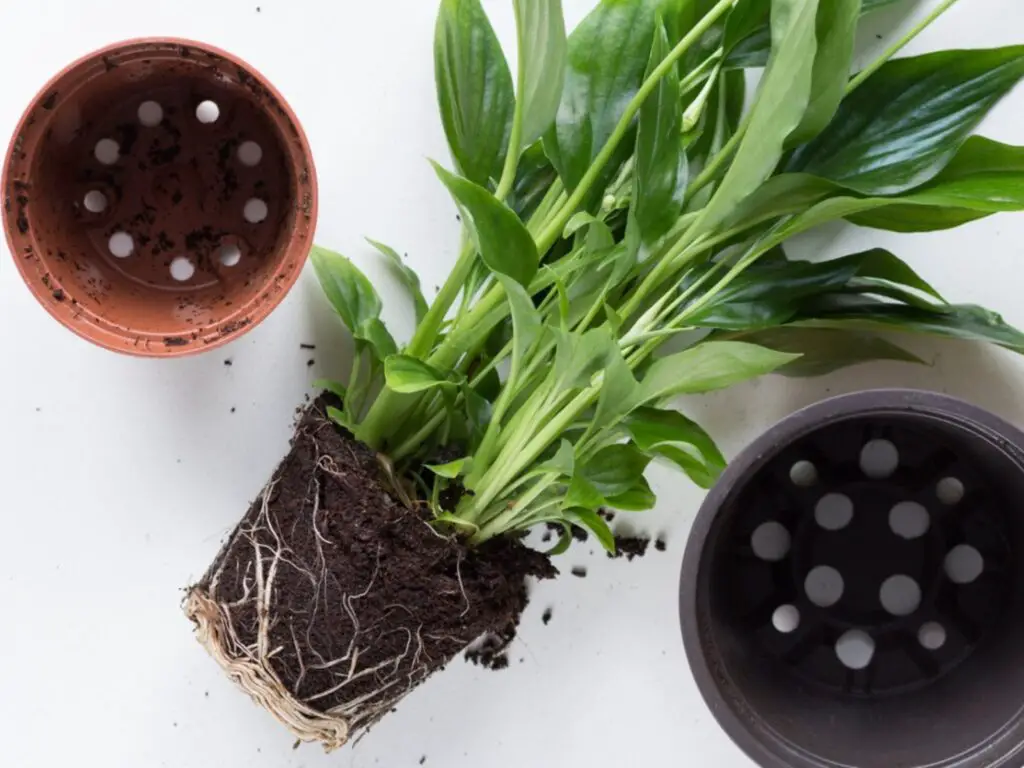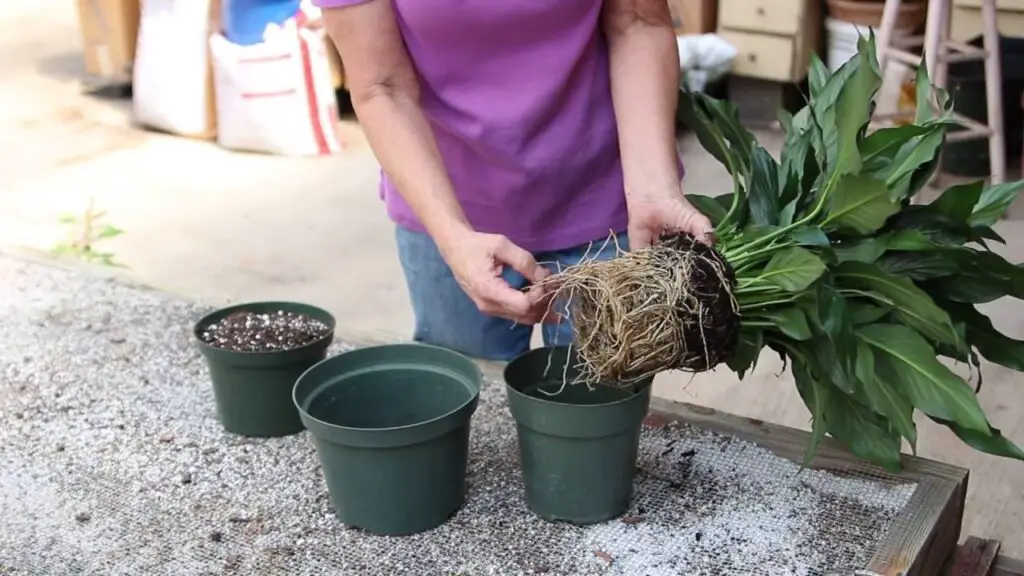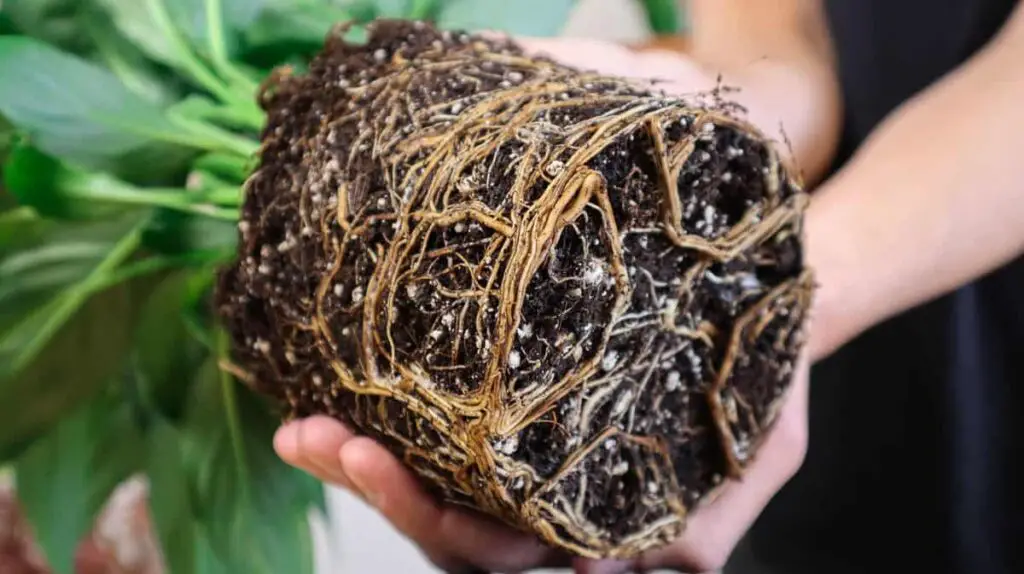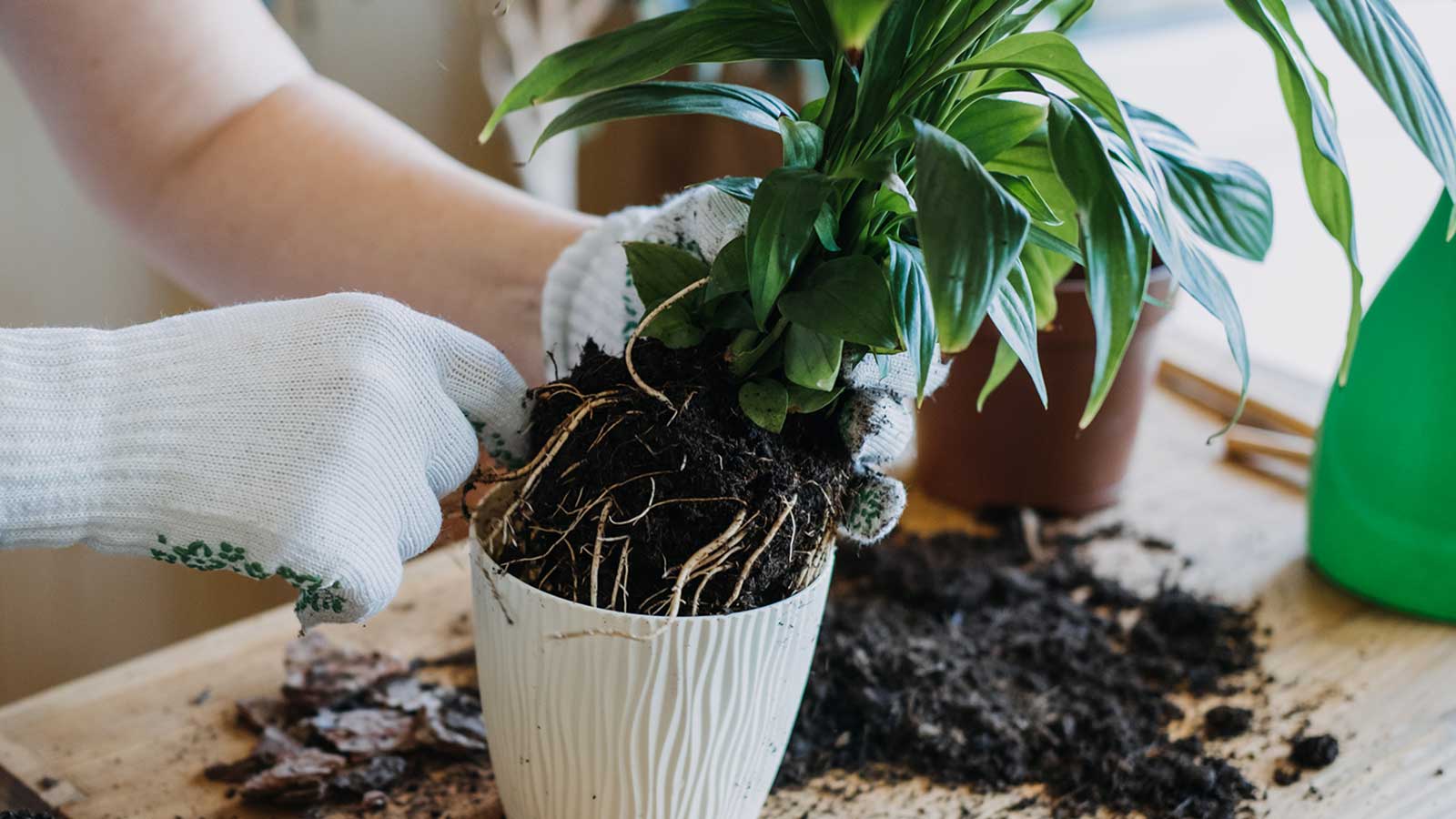Repotting a peace lily is an essential part of caring for this beautiful, low-maintenance houseplant. Known for their striking white flowers and lush green leaves, peace lilies (Spathiphyllum) thrive when given the right environment and attention.
Over time, your plant may outgrow its container, signaling the need for a new pot. In this guide, we’ll explore the signs that it’s time to repot your peace lily, the best practices for doing so, and tips for ensuring a smooth transition.
Why Repotting Is Important for Peace Lilies

Peace lilies are resilient plants, but repotting every two to three years is crucial for their long-term health. The process refreshes their soil, provides more space for growth, and prevents common problems such as root binding and nutrient deficiency.
Without repotting, the plant may struggle to absorb water and nutrients, leading to poor growth and fewer blooms.
When to Repot Your Peace Lily
The ideal time to repot a peace lily is during its active growing season, typically in early spring. Repotting in March or April allows the plant to adjust to its new environment during a period of vigorous growth. Avoid repotting in winter when the plant is dormant, as this can increase the risk of transplant shock.
Signs Your Peace Lily Needs Repotting
Knowing when to repot is essential for maintaining your peace lily’s health. Look out for these signs:
Outgrowing the Pot: If the stems and leaves are overflowing or look cramped, it’s time for a larger container.
Roots Emerging: Roots protruding from the soil surface or drainage holes indicate the plant has outgrown its current pot.
Compacted Soil: If water doesn’t seep through easily or the soil appears crusty and dense, it’s time for a change.
Yellowing Leaves: Leaves turning yellow can signal that the soil’s nutrients are depleted, and fresh soil is needed.
Choosing the Right Pot

Selecting an appropriate pot is a critical step in repotting. Opt for a pot that is 1 to 2 inches larger in diameter than the current one. A pot that’s too big can retain excess moisture, leading to root rot. Terracotta or unglazed clay pots are excellent choices because they help wick away excess water, maintaining the right moisture levels for your peace lily.
Ensure the pot has proper drainage holes to prevent waterlogging. If the pot doesn’t have drainage holes, consider adding a layer of pebbles at the bottom to improve drainage.
Preparing the Potting Mix

Peace lilies thrive in a well-draining, nutrient-rich potting mix that mimics their natural rainforest habitat. A peat-based mix is ideal, as it retains moisture while allowing excess water to drain. Incorporating composted bark, sand, or perlite will enhance drainage and aeration.
You can purchase a pre-made mix labeled for houseplants or create your own blend using the following ratio:
- 2 parts peat moss or coco coir
- 1 part perlite or coarse sand
- 1 part composted bark or organic matter
Step-by-Step Guide to Repotting a Peace Lily
Follow these steps to successfully repot your peace lily:
Gather Your Supplies: You’ll need a new pot, fresh potting mix, gloves, and pruning shears.
Water the Plant: Water your peace lily a day before repotting. Moist soil is easier to work with and less stressful for the roots.
Remove the Plant from Its Pot: Gently loosen the soil around the edges of the pot. Hold the base of the plant and carefully slide it out. If the roots are stuck, tap the pot lightly or use a knife to loosen the soil.
Inspect the Roots: Check the roots for signs of rot or damage. Healthy roots should be white and firm. Trim away any brown, mushy, or damaged roots using sterilized pruning shears.
Prepare the New Pot: Add a layer of fresh potting mix to the bottom of the new pot. This will provide a cushion for the roots and ensure proper drainage.
Place the Plant in the New Pot: Center the plant in the pot, ensuring the root ball is slightly below the rim. Add soil around the roots, pressing gently to remove air pockets. Avoid burying the crown of the plant, as this can lead to rot.
Water Thoroughly: After repotting, water the plant until excess water drains out. This helps settle the soil and ensures the roots are hydrated.
Position the Plant: Place the peace lily in a location with bright, indirect light. Avoid direct sunlight, which can scorch the leaves.
Related Topics:
Caring for Your Peace Lily After Repotting
After repotting, your peace lily may experience transplant shock, which can cause wilting or drooping leaves. Here’s how to minimize stress and encourage recovery:
Avoid Overwatering: Water the plant only when the top inch of soil feels dry. Overwatering can worsen transplant shock.
Maintain Humidity: Peace lilies thrive in humid conditions. Consider misting the leaves or placing a tray of water and pebbles near the plant to increase humidity.
Keep Away from Drafts: Avoid placing the plant near cold drafts or air conditioning vents.
Be Patient: It may take one to two weeks for the plant to adjust to its new pot. During this time, limit fertilizing to prevent further stress.
Common Mistakes to Avoid
Using a Pot That’s Too Large: Oversized pots retain too much moisture, increasing the risk of root rot.
Repotting Too Often: Repotting too frequently can disturb the plant’s growth cycle. Stick to every two to three years unless necessary.
Overwatering After Repotting: Resist the urge to overwater immediately after repotting. Allow the soil to dry slightly between waterings.
Ignoring Root Problems: Failing to inspect and trim damaged roots can lead to ongoing health issues for your peace lily.
Benefits of Repotting
Repotting your peace lily offers numerous benefits, including:
Improved Growth: Fresh soil provides essential nutrients that support healthy growth and vibrant foliage.
Better Blooming: Peace lilies are more likely to produce their signature white flowers when their roots have room to grow.
Healthier Roots: Proper drainage and fresh soil prevent root rot and other common issues.
Repotting a peace lily is a rewarding task that ensures your plant remains healthy and beautiful for years to come. By recognizing the signs that it’s time to repot, selecting the right pot and soil, and following proper techniques, you can help your peace lily thrive.
With a little care and attention, your peace lily will continue to grace your home with its stunning foliage and elegant blooms.


2 thoughts on “Correct Way to Repot a Peace Lily for Longer Lasting Blooms”